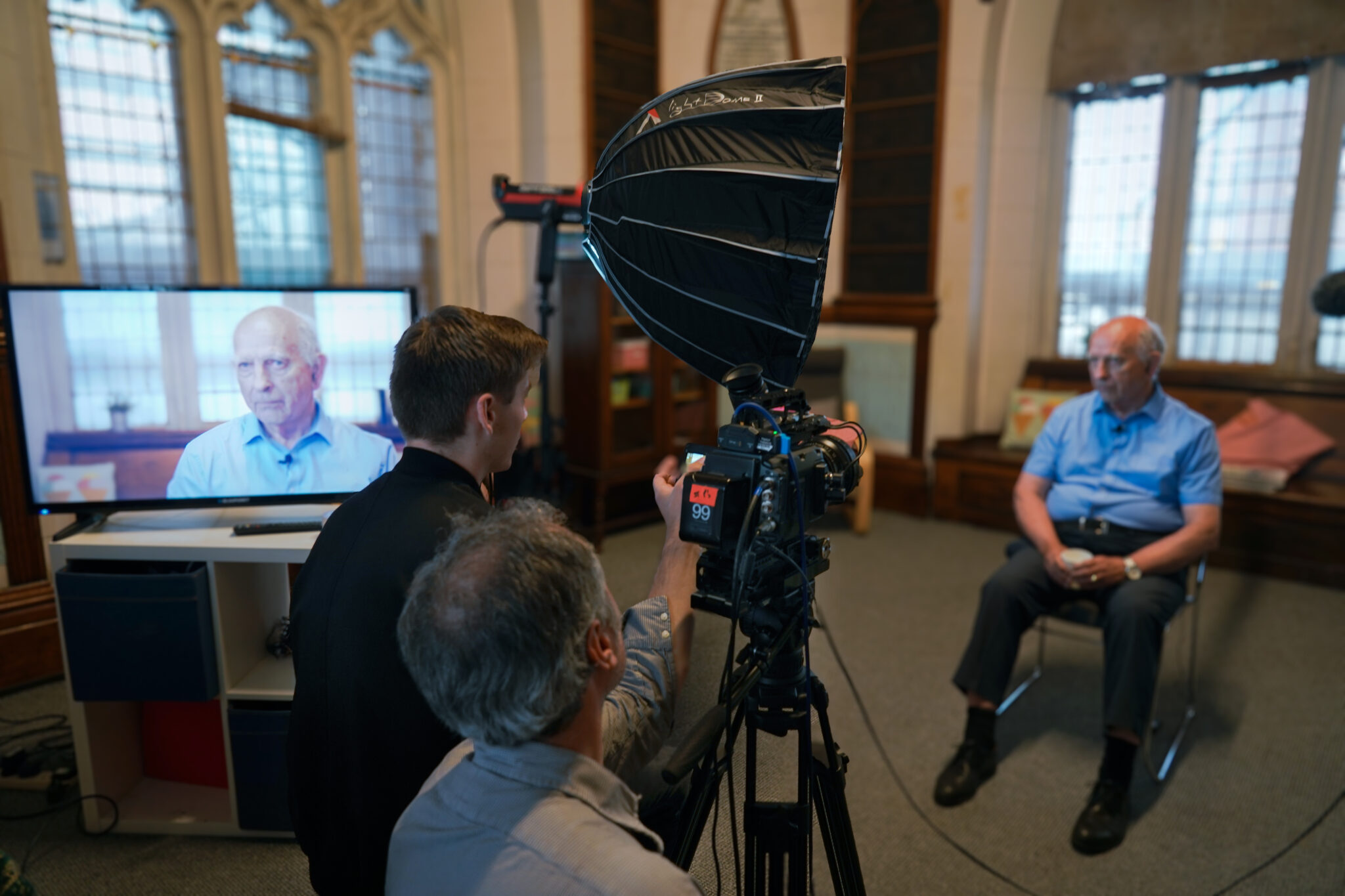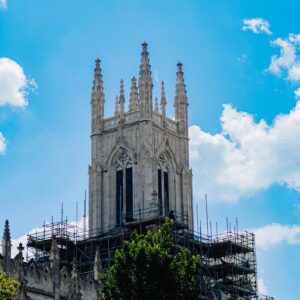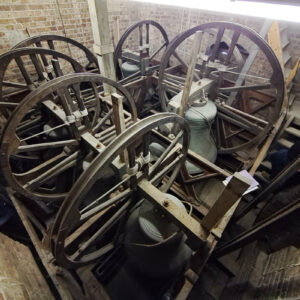Bernard North
I was born in Brighton in March 1946 and initially lived in Ditchling Rise, just off the London Road near Preston Park and close to the railway viaduct carrying the line toward Lewes.
I don’t remember much of those early days as we moved from there when I was about three years old to 11 Richmond Terrace, adjacent to what was then Brighton Technical College and right opposite The Level, just up the road from the church. This was my home until I was 18 when I left to go to university and start work.
I didn’t have any brothers or sisters, so no one else to recall those days I am afraid, except one or two cousins maybe, who used to visit us from time to time from the Oxfordshire/Bucks area to spend a few days at the seaside.
My parents came from a small village near Thame in Oxfordshire. My father was a printer by trade and following service in the Royal Air Force during the Second World War, my parents moved to Brighton for my father’s work and settled.
Until retirement, my father worked for the Southern Publishing Company based in Robert Street, and specifically as a typesetter for the Evening Argus. Latterly he became responsible for the maintenance of the typesetting machines (Linotype and Intertype) then used in the mainstream newspaper industry. This was in the days of hot metal printing presses long before the computer took over and consigned those skills to the history books.
I went to infant and primary school at The Downs School in Ditchling Road, travelling by trolley bus, which were much in evidence around Brighton in the 1950s. For secondary school, initially I attended Fawcett Secondary Modern School, just off Trafalgar Street, not far from St Peter’s and then moved on to Patcham County Secondary School where I stayed until I left at 15.
I attended Brighton Technical College, right next door to where I lived, to study engineering up to the age of 18, which gave me the qualifications to take up Mechanical Engineering as a career and go to university.
Much of my early life was attached to St Peter’s in some way or other. My parents had both been brought up to attend their village church and I was naturally encouraged to follow in their footsteps.
I went to Sunday School at St Peter’s and when I was old enough, joined the church choir as a chorister. The organist and choirmaster at the time was Gavin Brown. I took piano lessons from him in the hall adjacent to the church. Also, on occasions I was allowed to play the fabulous Willis pipe organ. In my later teens, I also became a server as part of a choir team for parish communion services at St Peter’s.
My father was a sidesman at St Peter’s and occasionally read the lesson at services. My mother was involved with Mothers Union and a needlework group, I think called St Mary’s Guild, as well as other activities attached to St Peter’s. My father also was an avid cricketer and played for a team that was called St Peter’s, I think, from an attachment to a working men’s club, maybe. I tried to follow him, but I never was very good at sports.
The vicars I can remember from that era were Canon Booth, and Canon John Keeling. I was also confirmed at St Peters in March 1958 by a Bishop How.
Sadly, my mother died when I was 15 and her funeral service was held in St Peter’s.
Services were all far more traditional in those days and provided the foundation for my love of English Church Choral Music and singing choirs that is still very much part of my life today.
The other main activity that I became involved with at St Peter’s was bell ringing, the art of campanology. My father was a ringer having learned the basics at his home village in Oxfordshire. He joined the band of ringers at St Peters in the 1950’s and it was not long before I started to learn – I think I was about 10 or 11 years old at the time. I was better at ringing than I was a cricket, so my interest blossomed.
I became very active in ringing during my time at Brighton both at St Peter’s and in the wider area with the Sussex County Association of Change Ringers. Much of my early ringing was done at St Peter’s: practice, service ringing, weddings, quarter peals, peals.
On Monday 29 June 1959, I undertook my first quarter peal at St Peter’s of 1260 changes of Grandsire Triples. According to my records, it was rung for the Patronal Festival Evensong, it being St Peter’s Day. In total, I think I have rung 27 quarter peals and eight peals at St Peter’s mostly before the 1970s. Ringing there gave me a lifelong hobby and an interest that is still very much part of my life today where I now live in North Somerset, just south of Bristol. Currently, I am Ringing Master at St Mary’s, Yatton where we have a fine peal of 8 bells.
Many lifelong friendships developed with other ringers from that era of my life some of whom I still see to this day. We were all teenagers and in our early 20’s then, so we are a bit older now. In those days there were far more young people involved in ringing, and it became quite a good social activity. I could be out ringing most nights of the week in the local area – Shoreham, Worthing, Lewes, St Nicholas’, the Good Shepherd on Dyke Road, to name but a few – wherever you could get to by bus, train or on your bike. There were several outings and days out organised by the St Peter’s Ringers usually traveling by coach into pastures new to ring on the bells in those areas. I think we generally used Alpha Coaches as one of the ringers had connections and we got a good deal. I can recall ringing at Rochester Cathedral and Canterbury Cathedral on one of these trips.
I can also recall many Sunday evenings in the summer, after ringing for evensong, a group of us would walk down to the sea front, spend some time on the Palace Pier then walk along to Black Rock (before the days of the Marina) and then catch the bus back to Old Steyne and walk home. I think we even got as far as Rottingdean one evening on the undercliff walk.
At the same time, I also developed a lifelong passion for railways, and anything driven by steam, spending many happy hours trainspotting on Platform 3 at Brighton Station. This got me into model engineering through the miniature railway in Hove Park, all of which sparked my career in engineering.
I left Brighton in September 1964 to commence engineering training at a large engineering company in Bedford (W H Allen Sons & Co, Ltd) and went on to study for Mechanical Engineering degree at Bath University then situated in Bristol. After graduation, I worked for Rolls Royce in Bristol on the Olympus engines for the Concorde Supersonic airliner. That’s another story.
So, I have many memories of St Peter’s during my early life, and I have much to be thankful for those years that gave me a solid foundation for later life. I am still an active ringer with the Bath & Wells Association of Change Ringers and sing in several choirs in the Bristol as a tenor voice, all skills grown from the seed sown and initially nurtured at St. Peter’s.







‘This project is kindly funded by Historic England as part of the Everyday Heritage - Working Class Histories. We are grateful to them for this funding.’